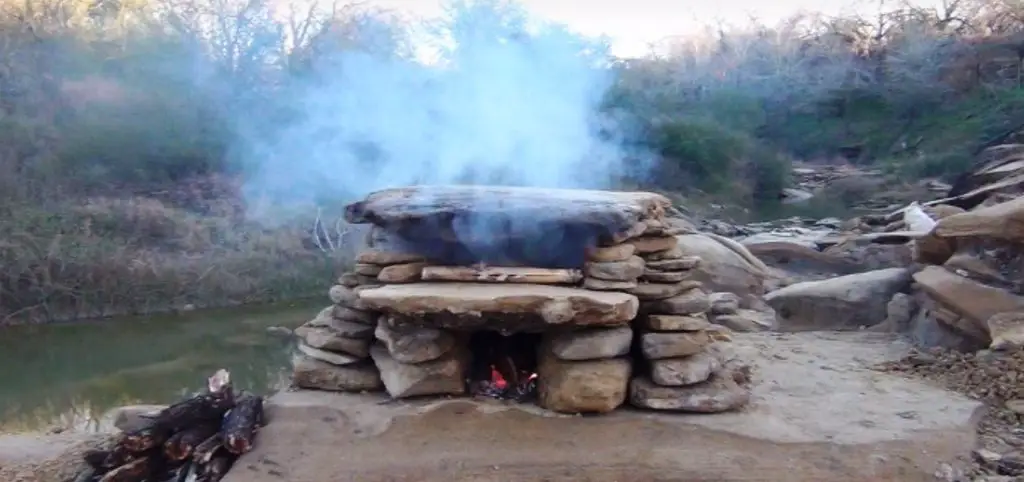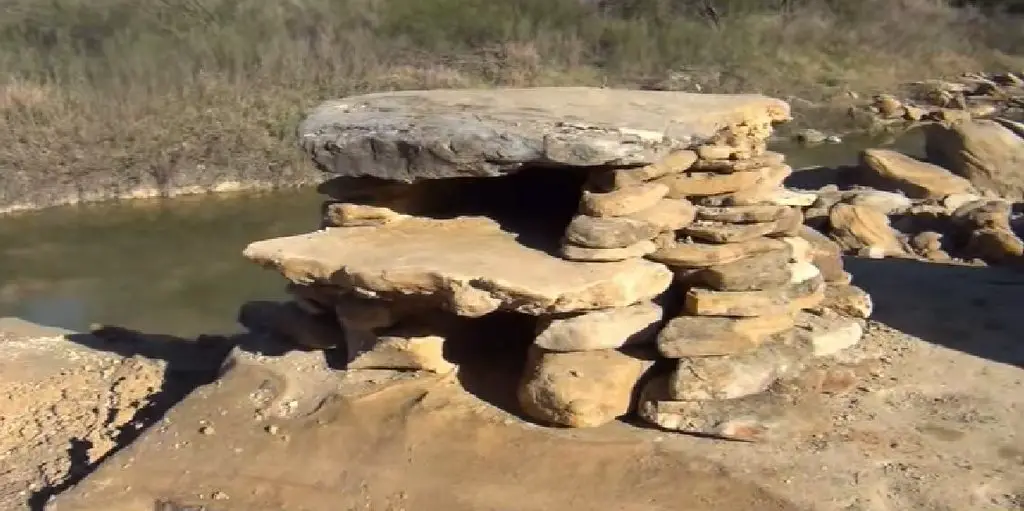
How would you like to have your very own stone oven?
Back in the old days when gas/electric stoves weren’t yet available, people were innovative. They made use of stones to cook, stacking them to form a stone oven.
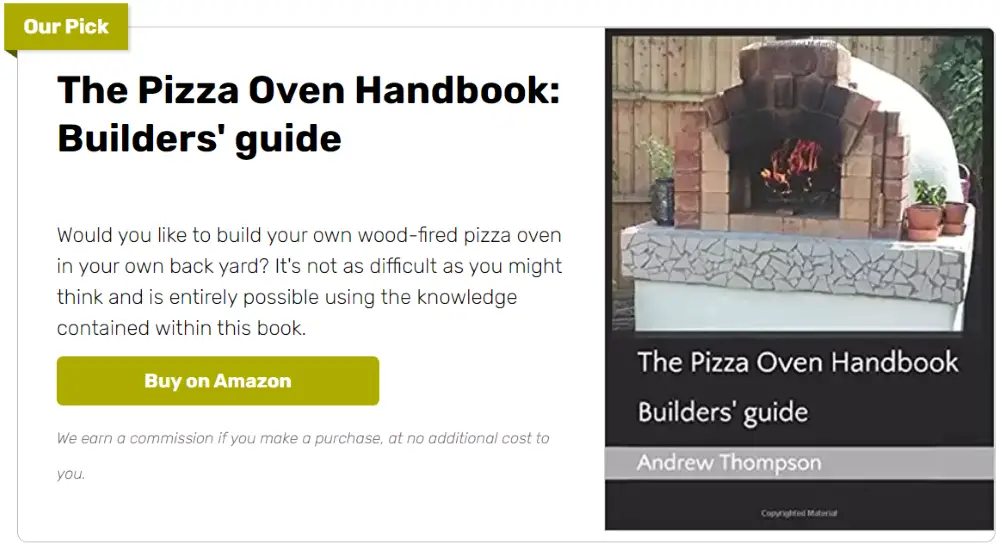
Today, despite the advent of technology, stone ovens come in handy. If you love the outdoors and camping is your thing, this project is definitely for you. You can also build one in your backyard – perfect for entertaining family and friends.
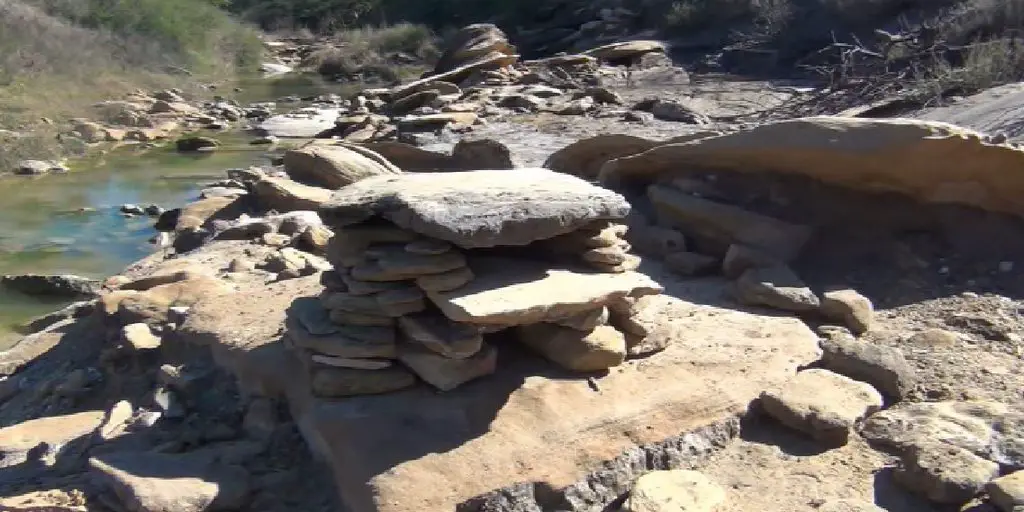
Because this oven’s made from stone, it costs nothing to build. If you have access to rocks and stones of different sizes, you’re good to go. A fair warning though: you’ll need time, patience, and effort to get this done. But then again, the result is worth it.
Do you think you can gather up your friends and get started on this DIY project?
Contents
Building a Stone Oven
Materials
- Stones and rocks in various shapes and sizes
- Natural clay/soil as mortar or filler (optional)
Instructions
Plan Your Oven
- Design: Decide on the size and shape of your oven. A simple dome design is effective and traditional.
- Location: Choose a flat, clear area away from structures and flammable materials.
Gather Materials
- Stones and Rocks: Collect or purchase stones of various shapes and sizes. Flat stones work best for the oven floor.
- Natural Clay/Soil: If available, natural clay or soil can be used as mortar.
Prepare the Foundation
- Clear the Ground: Remove any debris, grass, or stones.
- Lay a Foundation: Use flat, large stones to create a stable foundation. Ensure it’s level.
Form the Oven Floor
- Select Flat Stones: Arrange them tightly together on the foundation to create the oven floor. This is where your food will be placed, so ensure it’s flat and even.
Build the Oven Walls
- Start Laying Stones: Begin at the base and work your way up, layering stones around the perimeter of the floor.
- Use Clay/Soil as Mortar (Optional): If using, mix clay or soil with water to a paste-like consistency and apply between stones to secure them.
Construct the Dome
- Shape the Dome: As you build the walls higher, start angling the stones inward to form the dome shape.
- Support: Temporarily support the structure from the inside with sand or a wooden frame until the dome is completed.
Create the Oven Opening
- Leave a Gap: As you build the dome, leave a gap at the front for the oven opening. Make sure it’s wide and tall enough to easily place and remove food.
Finish the Dome
- Complete the Dome: Continue placing stones until the dome is closed at the top. Use smaller stones to fill in any gaps.
Seal and Insulate
- Apply Clay/Soil: If desired, cover the entire exterior with a thick layer of clay or soil to seal any cracks and provide insulation. This will help retain heat.
Cure the Oven
- Slow Heating: Gradually heat the oven with small fires over several days to dry out the clay/soil and set the stones. Avoid high heat, which can cause cracking.
Test and Enjoy
- Fire It Up: Build a larger fire to heat the oven. It may take a few hours to reach the desired temperature.
- Cook: Place your food directly on the stone floor or use a baking tray. Experiment with cooking times and temperatures.
Click on any image to start the lightbox display. Use your Esc key to close the lightbox.


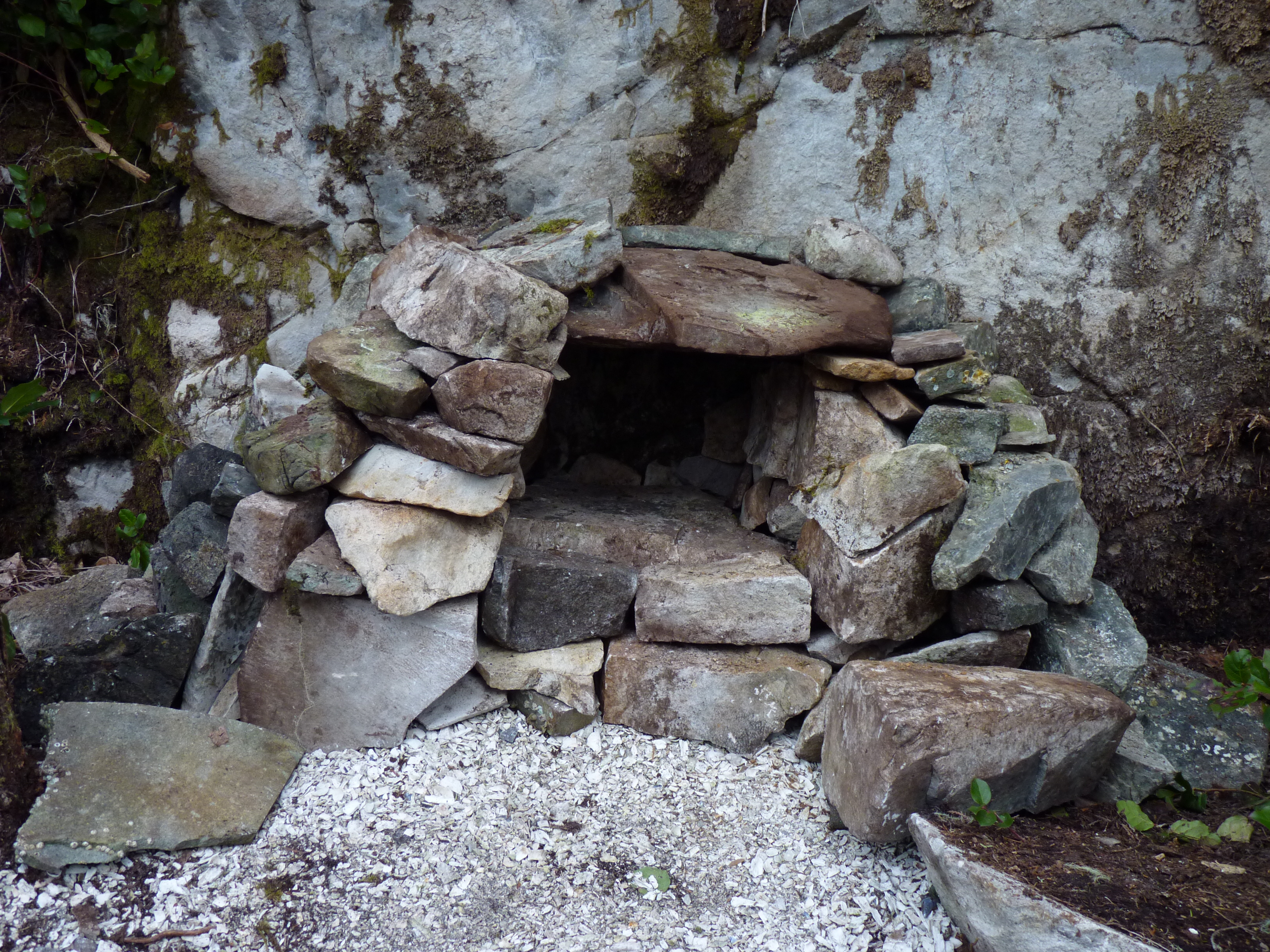
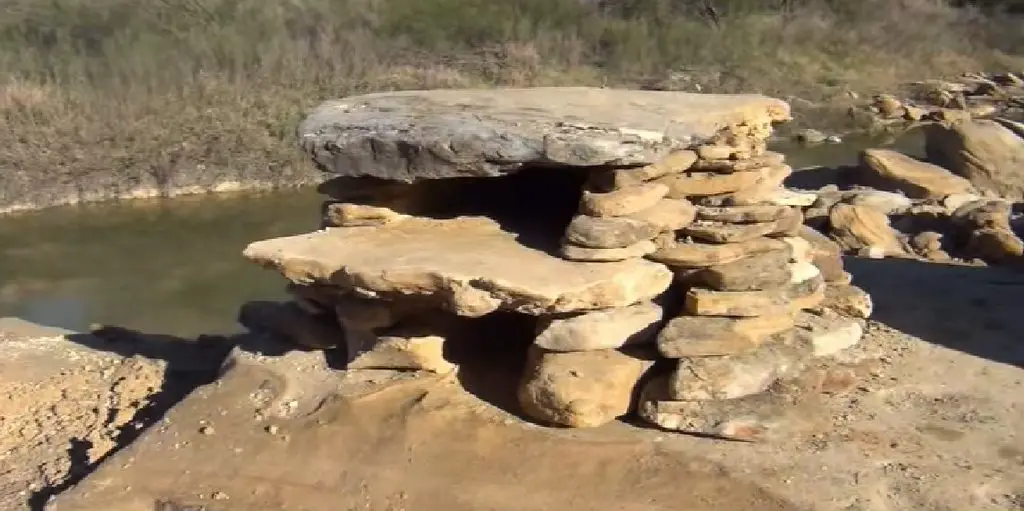
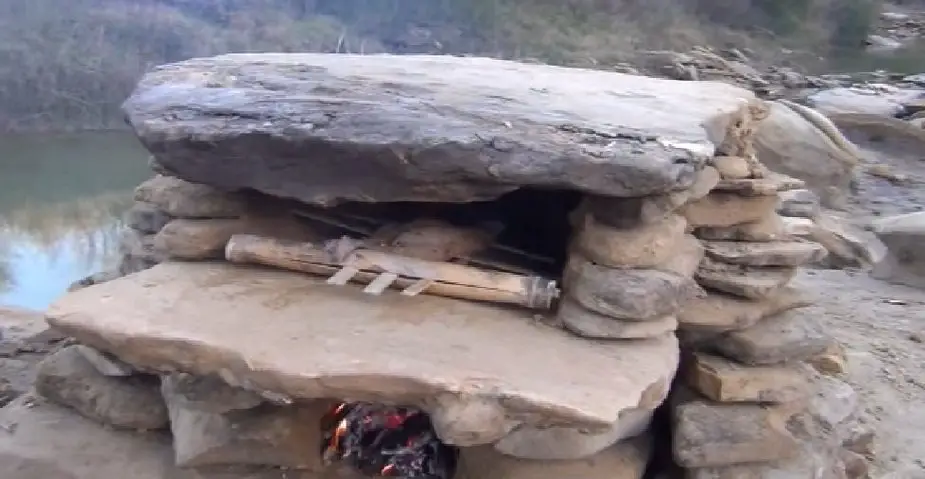
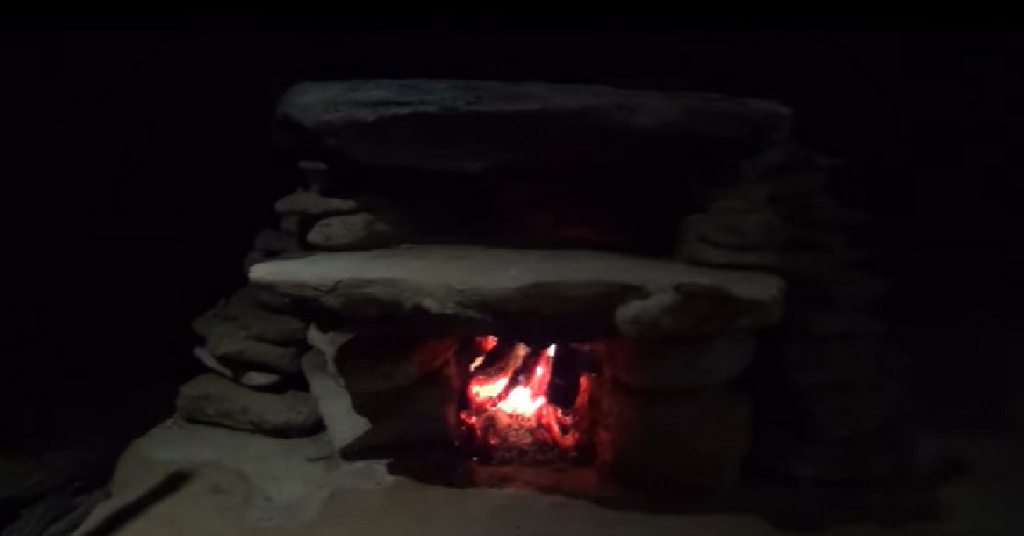
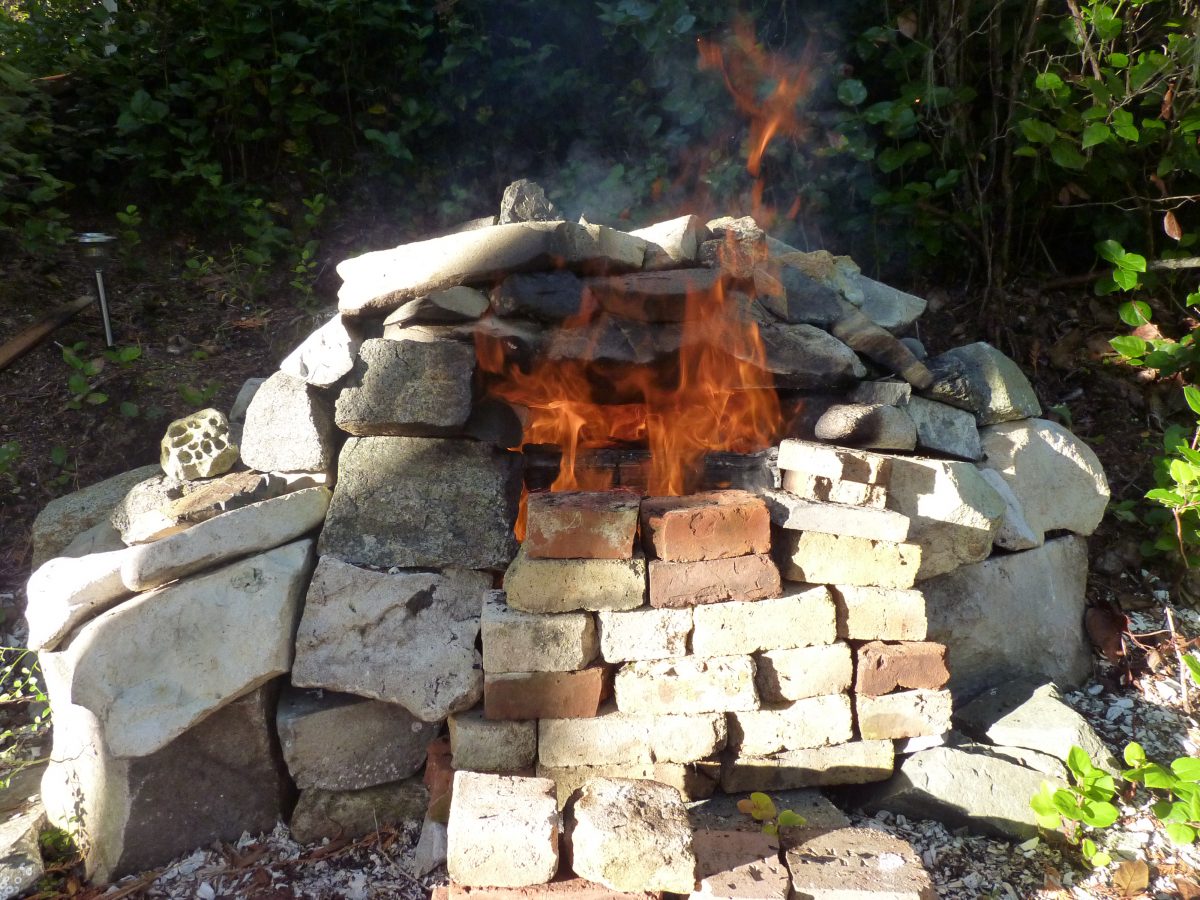
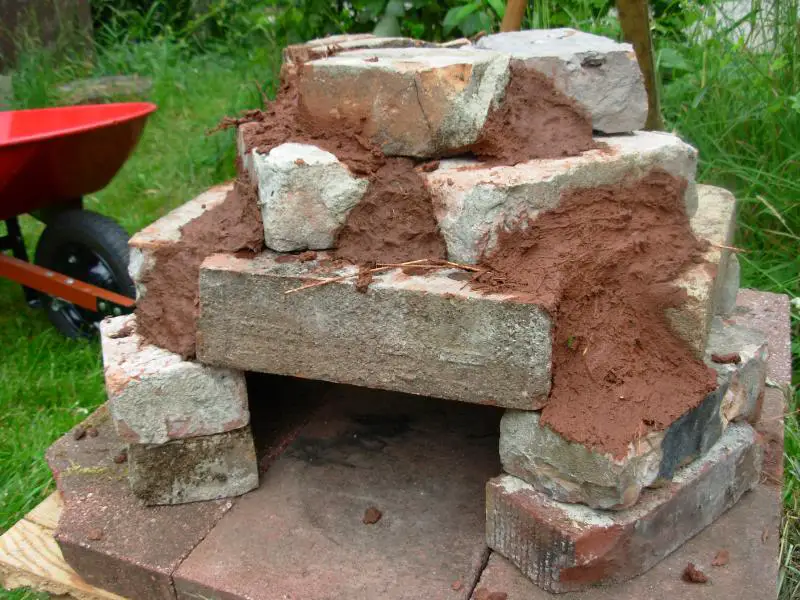
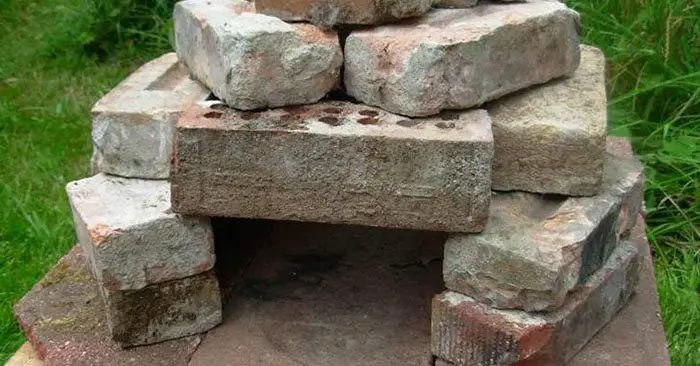
For a visual guide, check out the video below!
Cooking in a Stone Oven
Cooking in a stone oven offers a unique culinary experience reminiscent of ancient traditions and flavours that modern appliances struggle to replicate. With its natural ability to evenly distribute heat, the stone oven transforms simple ingredients into delightful dishes. Whether baking bread, roasting vegetables, or cooking a pizza, the stone oven infuses each meal with a distinctive taste and texture.
Here’s how to master the art of cooking in your stone oven.
Preheating the Oven
Before you begin, it’s essential to preheat your stone oven. This process can take anywhere from 1 to 3 hours, depending on the size of your oven and the desired cooking temperature. Start by building a fire using dry, seasoned wood.
Spread the flames evenly across the oven floor to ensure a uniform heat distribution. Once the interior reaches a white-hot temperature and the stones are visibly hot, carefully remove the ashes or push them to the side if you cook directly on the oven floor.
Cooking with Direct Heat
Direct heat cooking is ideal for pizzas, flatbreads, and other dishes that benefit from a crisp, charred exterior. Slide your dish onto the hot stone floor using a long-handled oven peel. The intense bottom heat will give your pizza a perfect crust while melting the toppings evenly. Keep the oven door slightly ajar to regulate the temperature and allow air circulation.
Roasting and Baking
For roasting meats or baking bread, the oven must cool slightly to reach a more moderate temperature. Once the desired temperature is achieved, place your meat or dough inside, closing the door to trap the heat. The stone walls radiate a steady, even heat, creating a perfect environment for a slow roast or a beautifully risen loaf. Use a thermometer to monitor the temperature, as stone ovens can retain heat for several hours, ensuring even cooking.
Utilizing Residual Heat
After the high-heat recipes, take advantage of the oven’s residual heat. This lower temperature setting is perfect for dishes that require slow cooking, such as stews or casseroles. It’s also an ideal time to dry herbs or make slow-roasted tomatoes. As the oven cools, the flavours concentrate, and the textures transform, offering a range of culinary possibilities.
Tips for Successful Stone Oven Cooking
- Stay Vigilant: Cooking times can be quicker in a stone oven, so keep a close eye on your dishes to prevent burning.
- Experiment: Don’t be afraid to try different recipes and techniques. Stone ovens are versatile and can cook a wide range of dishes.
- Invest in Tools: A good quality oven peel, long-handled brushes, and a reliable thermometer can make stone oven cooking more efficient and enjoyable.
Cooking in a stone oven is an art that rewards patience and creativity. The flavors achieved are unparalleled, and mastering this ancient cooking method offers immense satisfaction. Whether you’re a seasoned chef or a curious food enthusiast, the stone oven offers culinary exploration.
Comparing Stone Ovens with Modern Ovens
Choosing between a stone oven and a modern oven often involves personal preference, culinary ambitions, and lifestyle considerations. Each type of oven offers unique benefits, catering to different cooking styles and preferences.
Below is a detailed comparison between a stone oven and a traditional one.
Heat Distribution
- Stone Oven: Known for its superior heat distribution, a stone oven provides an even cooking temperature throughout. The stones absorb heat and radiate it uniformly, creating an ideal environment for baking bread with a perfect crust or pizza with a crispy base.
- Modern Oven: Modern ovens, especially convection models, are designed to distribute heat evenly. While highly efficient, they may not achieve the same heat retention and distribution as stone ovens, which can impact the texture and flavor of certain dishes.
Flavor Enhancement
- Stone Oven: A stone oven’s high heat and unique cooking environment can impart a distinct flavor profile to dishes, especially bread and pizza. The smoky tones and crisp textures achieved in a stone oven are hard to replicate with modern technology.
- Modern Oven: While modern ovens may lack the ability to enhance flavors through smoke and intense heat naturally, they offer precise temperature control. This allows for a wide range of cooking techniques and recipes that require specific conditions.
Cooking Time
- Stone Oven: Stone ovens can reach higher temperatures than most modern domestic ovens, reducing cooking times for certain dishes. However, they also require extended preheating to get the desired temperature.
- Modern Oven: Modern ovens heat up quickly and offer the convenience of shorter preheating times. The precise temperature control allows for exact cooking times, essential for delicate dishes.
Versatility
- Stone Oven: While traditionally used for bread and pizza, stone ovens are incredibly versatile and can roast meats and vegetables and even bake desserts. However, their performance and usage can be limited by their size and the effort required to maintain the correct temperature.
- Modern Oven: Modern ovens are versatile and easy to use with consistent temperature control for baking, broiling, roasting, and more.
Aesthetic and Experience
- Stone Oven: Building and cooking with a stone oven can offer a rustic and engaging culinary experience. Firing up the stove and cooking with fire can add a sense of tradition and craftsmanship to your meals.
- Modern Oven: Modern ovens prioritize convenience and efficiency over the cooking experience, fitting seamlessly into the fast-paced modern lifestyle. While lacking the traditional charm of a stone oven, they still provide functionality.
Choosing between a stone oven and a modern oven depends on what you value most in your cooking adventures. If you’re drawn to the artisanal aspects of cooking, savoring the process as much as the results, a stone oven might be your ideal choice. However, for those who prioritize convenience, precision, and versatility in their culinary pursuits, a modern oven will likely serve your needs better. Both options have their place in the world of cooking, offering different paths to delicious meals and satisfied palates.
Conclusion
Building a stone oven is a rewarding endeavor that merges traditional cooking methods with the joy of outdoor culinary experiences. It offers a unique way to prepare a variety of dishes, infusing them with unmatched flavors that only stone-based cooking can provide. This project not only enhances your cooking repertoire but also serves as a timeless addition to your outdoor space, promising countless hours of enjoyment and gastronomic exploration.

